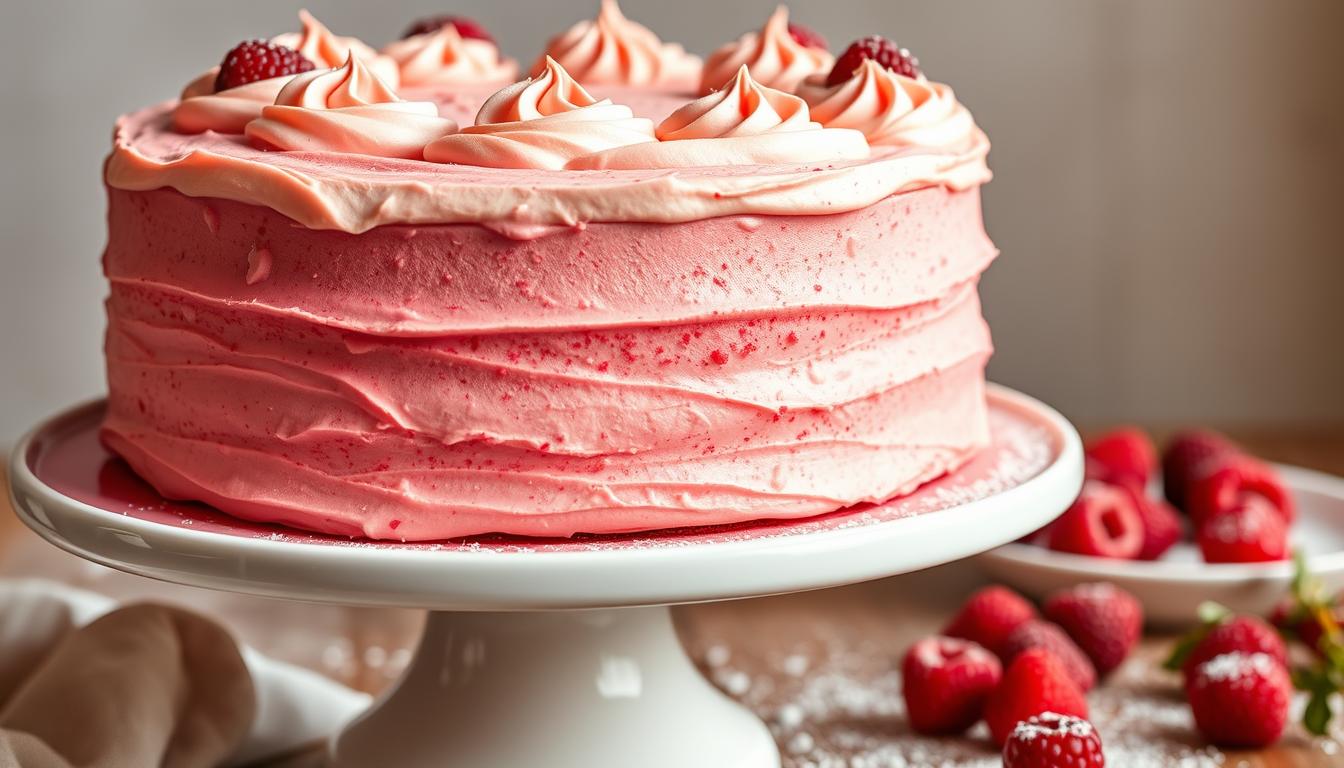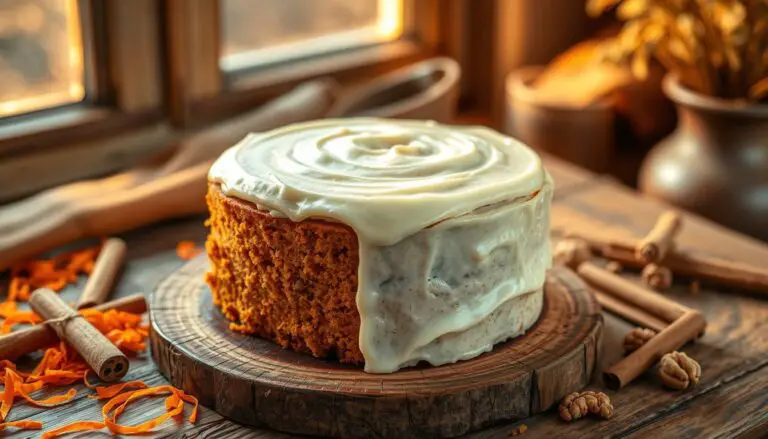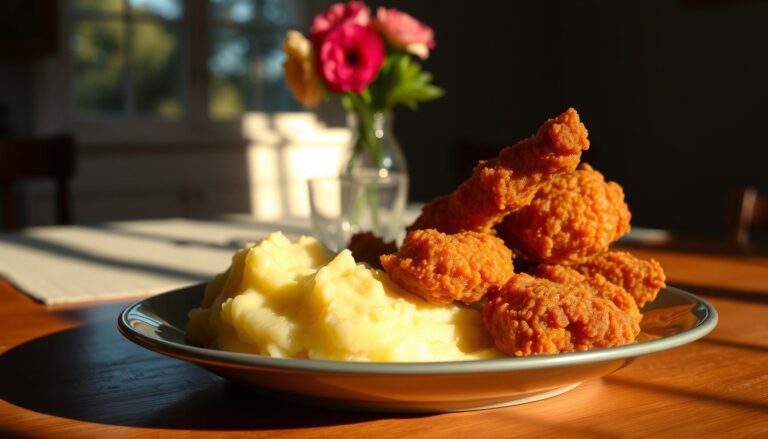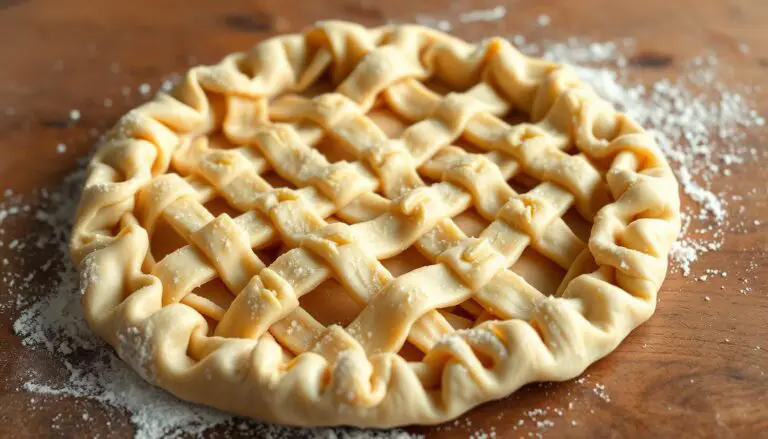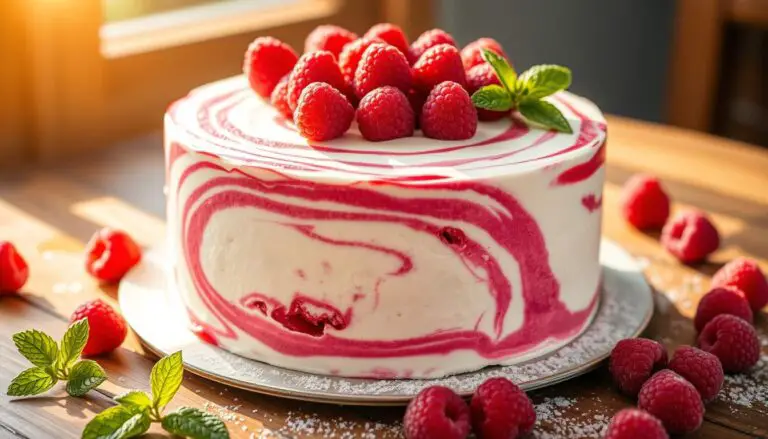As I reflect on the most iconic desserts in American baking history, one treat stands out for its distinctive crimson color and velvety texture: the red velvet cake. This classic dessert has long fascinated bakers with its unique flavor profile that’s both subtle and unforgettable.
The allure of this velvet dessert lies in its delicate balance between vanilla and cocoa flavors, enhanced by the tanginess of buttermilk. When paired with rich cream cheese frosting, the result is a truly decadent experience.
Understanding the science and history behind this beloved cake can help bakers appreciate the importance of specific ingredients and techniques in achieving its authentic flavor and texture.
Key Takeaways
- The red velvet cake is known for its distinctive color and velvety texture.
- It occupies a unique position between vanilla and chocolate cake.
- The perfect red velvet cake features a moist crumb and rich cream cheese frosting.
- Understanding the science and history is crucial for achieving authentic flavor.
- Essential ingredients include buttermilk and high-quality cocoa.
The Unique Charm of Red Velvet Cake
There’s something special about red velvet cake, a dessert that masterfully balances flavors to create a truly unforgettable experience. As I explore the unique charm of this beloved cake, it becomes clear that its appeal lies in its subtle complexity and rich flavor profile.
What Makes Red Velvet Cake Special
Red velvet cake is more than just a dessert; it’s an experience that combines the richness of cocoa with the tanginess of buttermilk and the sweetness of vanilla. The subtle interplay of these flavors creates a truly unique taste sensation. The cake’s distinctive flavor profile is characterized by a delicate balance of mild cocoa notes, the tanginess of buttermilk, and the sweetness of vanilla.
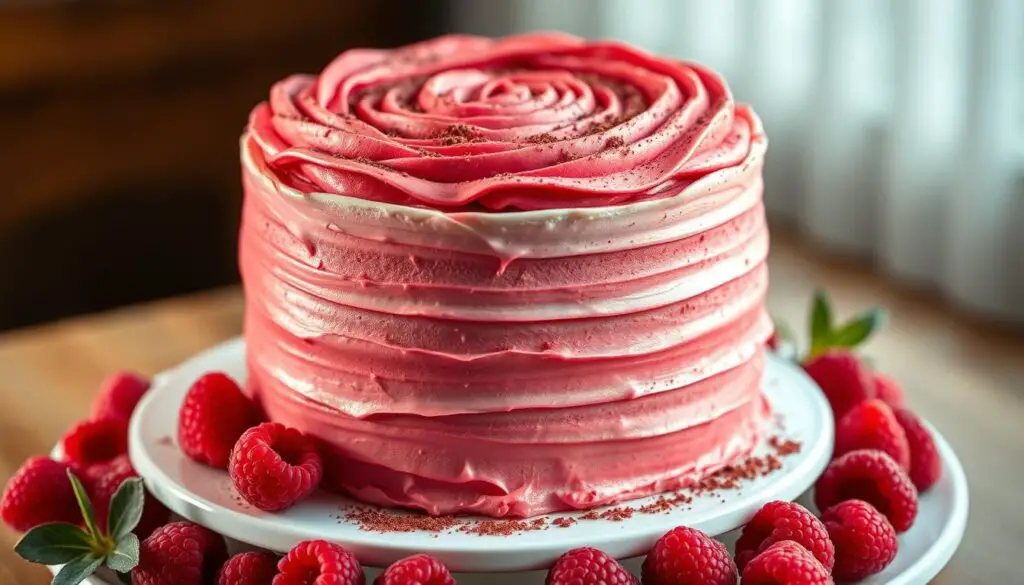
The Distinctive Flavor Profile
The flavor profile of red velvet cake is its most distinctive feature. The subtle chocolate flavor comes from a small amount of cocoa powder, typically 2-3 tablespoons, which provides complexity without overwhelming the other flavors. Buttermilk contributes a pleasant tanginess that balances the sweetness and adds moisture to the cake’s texture. Meanwhile, vanilla extract enhances the overall flavor, adding warmth and depth to the cake’s taste.
When properly balanced, these flavors create a cake that’s simultaneously familiar yet distinct from other classic cakes. I’ve found that the best red velvet cakes allow each flavor component to be detectable without any single element dominating the experience, making it a true delight for the palate.
The History and Origin of Red Velvet Cake
The story of red velvet cake is one of transformation, from its humble beginnings to its current status as a beloved classic. This iconic dessert has a rich history that spans decades, with its evolution influenced by various cultural and culinary factors.
Before the Era of Food Coloring
Traditionally, red velvet cake’s distinctive color was not solely the result of food coloring. During World War II, bakers used beet juice to enhance the cake’s color when food rationing limited access to other ingredients. The reaction between the cocoa powder and acidic buttermilk also contributed to its unique hue. The original recipe, which included flour, cocoa powder, and butter, resulted in a cake that was both moist and flavorful.
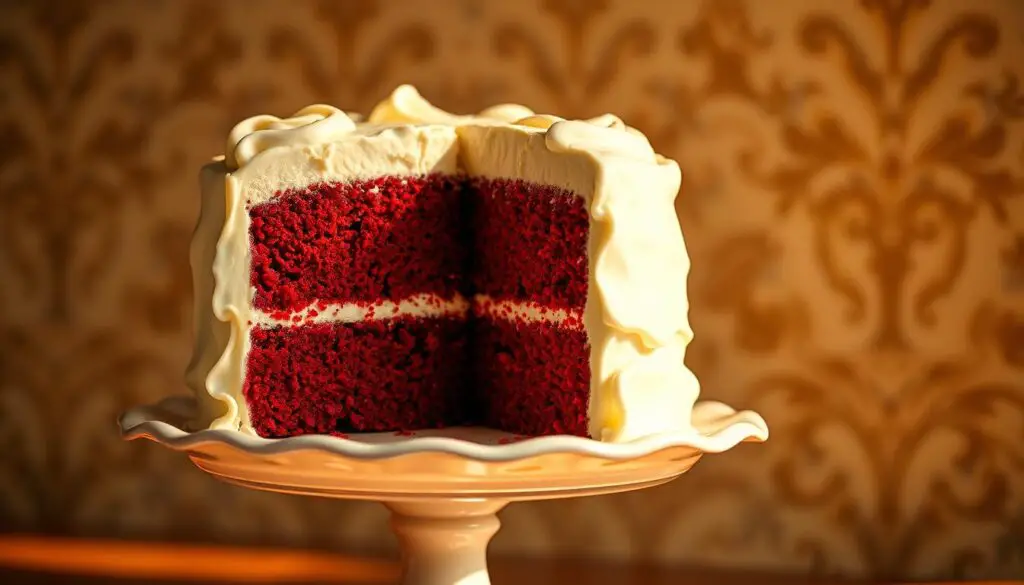
From Tradition to Modern Classic
The modern version of red velvet cake gained widespread popularity in the 1940s when the Adams Extract Company began promoting their red food coloring alongside a red velvet cake recipe. The Waldorf Astoria Hotel in New York also claims to have created the modern version, which became known as “Waldorf Astoria Cake” in some regions. Over time, regional variations developed across the United States, with Southern recipes typically featuring more cocoa powder and cream cheese frosting. Today, red velvet cake is a cultural icon, featured at weddings, Valentine’s Day celebrations, and Christmas gatherings due to its festive color.
Essential Ingredients for the Perfect Red Velvet Cake
To create an authentic red velvet cake, it’s crucial to understand the role of each ingredient. The perfect cake is a delicate balance of flavors and textures, achieved through the careful selection of key components.
The Role of Buttermilk and Vinegar
Buttermilk is a critical ingredient in red velvet cake, contributing to its moistness and subtle tanginess. The acidity in buttermilk reacts with baking soda to produce a tender crumb. Additionally, the inclusion of vinegar enhances the cake’s flavor profile and helps maintain its signature red color when combined with cocoa powder.
Cocoa Powder: Finding the Right Balance
The choice of cocoa powder significantly impacts the flavor and color of the red velvet cake. Dutch-processed cocoa powder is often preferred for its rich, mellow flavor. The amount used must be balanced to achieve the desired intensity of chocolate flavor without overpowering the other ingredients.
Food Coloring Options: Artificial vs. Natural
Achieving the signature red color of red velvet cake can be done using various food coloring options. While traditional recipes rely on artificial coloring, with gel or liquid being popular choices, some bakers opt for natural alternatives like beet powder or pomegranate juice. The choice between artificial and natural coloring depends on the desired intensity of color and the potential impact on flavor.
Understanding the function of each ingredient, from flour and sugar to butter and salt, is essential for crafting the perfect red velvet cake. By carefully selecting and balancing these components, bakers can create a truly exceptional dessert.
My Foolproof Red Velvet Cake Recipe
My foolproof red velvet cake recipe is the culmination of years of experimentation and a deep understanding of what makes this velvet cake so special. Achieving the perfect red velvet involves more than just following a list of ingredients; it’s about understanding the role each component plays and how they work together to create that signature taste and texture.
The Secret to a Velvety Texture
The secret to a velvety texture lies in the combination of ingredients and the technique used to mix them. Using room temperature eggs and butter ensures that the batter mixes smoothly, resulting in a cake that’s both tender and moist. The addition of buttermilk and a touch of vanilla extract enhances the flavor, making it more complex and appealing.
Mixing Techniques for Best Results
To achieve the best results, it’s crucial to use the right mixing technique. I recommend using a mixer to cream the butter and sugar until it’s light and fluffy, then incorporating the eggs one at a time, ensuring each is fully incorporated before adding the next. In a separate bowl, whisk together the dry ingredients, including the cocoa powder that gives the red velvet cake its distinctive color and flavor.
Baking Tips and Troubleshooting
Baking the cake layers requires attention to detail. To ensure they bake evenly, fill the pans no more than 2/3 full and bake in a preheated oven. It’s also crucial to avoid opening the oven door during the first 20 minutes to prevent temperature fluctuations. If your cake layers dome too much, you can adjust the oven temperature or use cake strips to achieve a flat top. Ensuring your ingredients are at room temperature and using the right type of cocoa powder can also prevent issues like a cake turning brown instead of red.
By following these tips and using my recipe, you’ll be well on your way to baking a red velvet cake that’s sure to impress. Whether you’re making it for a special occasion or just because, this cake is sure to be a hit.
Conclusion: Why Red Velvet Cake Remains a Beloved Classic
The enduring popularity of red velvet cake can be attributed to its perfect balance of comfort and distinctiveness. Thisclassic desserthas become a staple for numerous occasions, from elegant weddings to casual birthday celebrations, due to its versatility.
The dramatic appearance of red velvet cake creates an immediate visual impact, delighting guests before they even taste the first bite. The complementary pairing of tangy cream cheese frosting with the subtle flavors of the cake creates a harmonious flavor experience that’s greater than the sum of its parts.
Red velvet cake connects us to baking traditions while remaining relevant to modern tastes and preferences. Its unique chemistry lesson—the interaction between cocoa, buttermilk, and vinegar—gives home bakers an opportunity to understand the science behind successful baking. As a result, red velvet cake maintains its popularity because it delivers consistent satisfaction while still feeling special.
Ultimately, the cake’s ability to be adapted to various dietary needs while maintaining its essential character ensures its continued relevance. Red velvet cake endures because it delivers what we seek most in desserts: a perfect balance of flavor, texture, appearance, and the ability to create memorable moments around the table.

